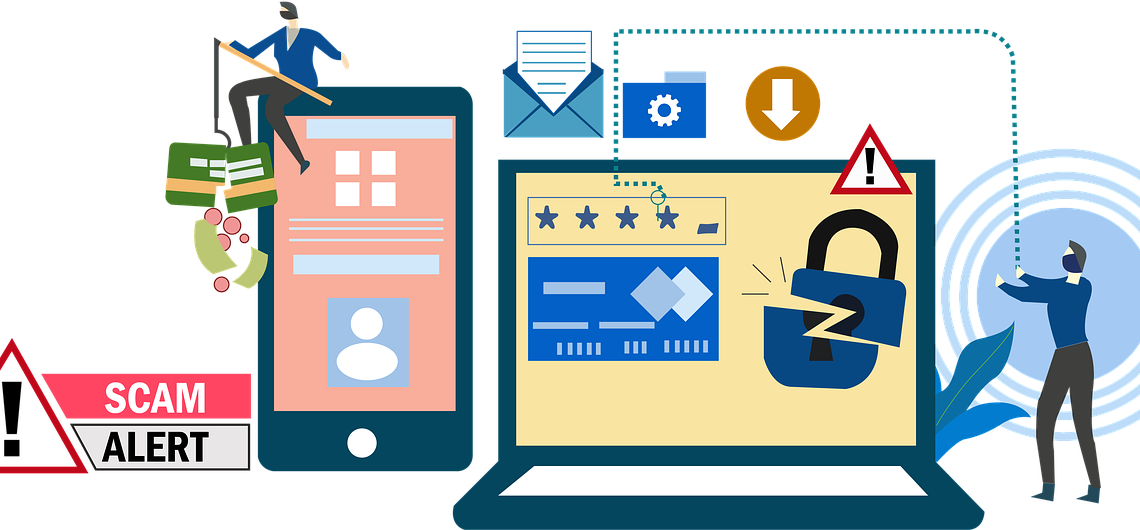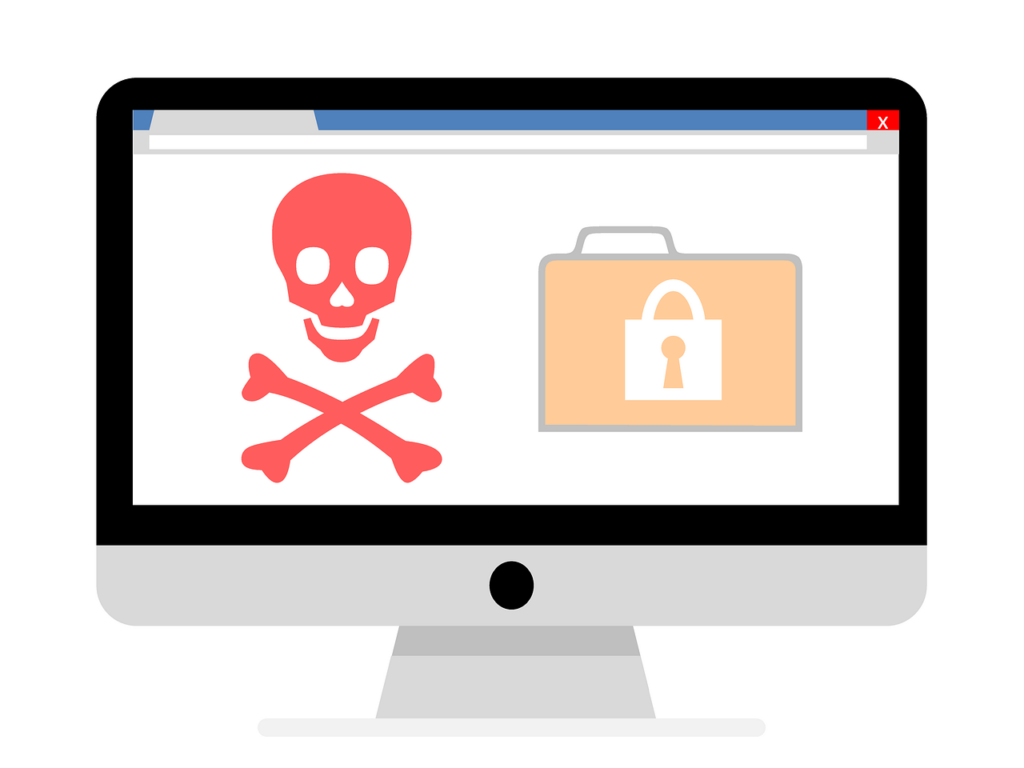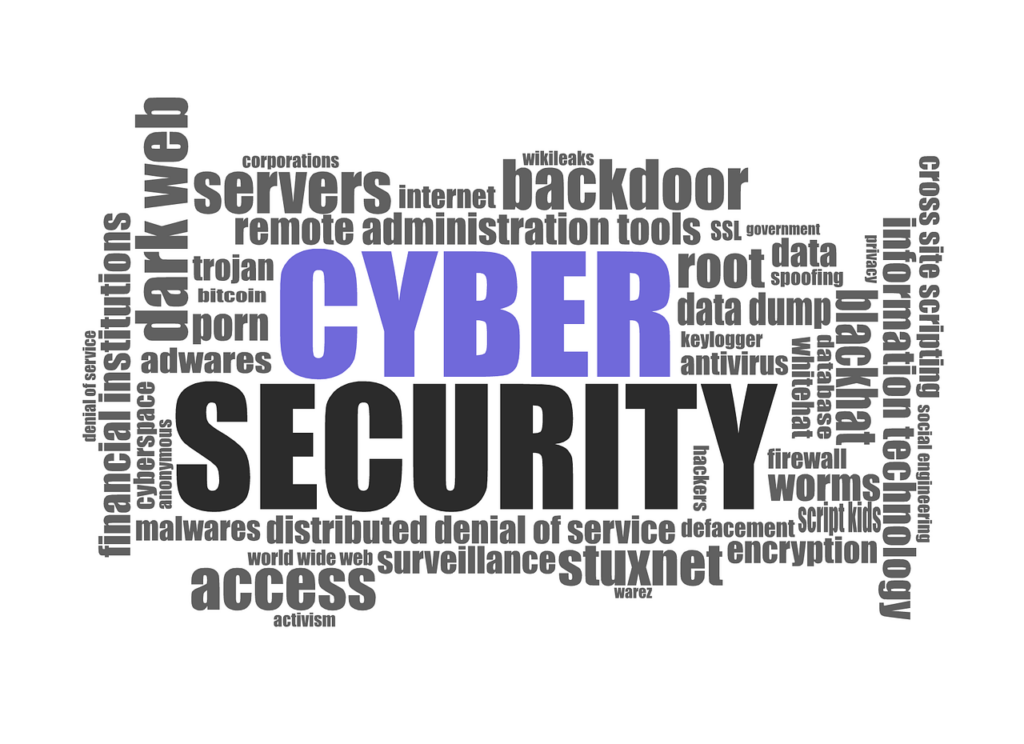Stay One Step Ahead: The Ultimate Guide to Malware Awareness

According to recent reports, organizations worldwide detected an alarming 493.33 million ransomware attacks in 2022.
Data is based on SonicWall Capture Labs
Shockingly, 41% of ransomware victims end up paying the ransom to regain access to their files. Some small businesses can’t afford to pay and don’t have backups, so they close down.
Phishing
Over the past few years, phishing has been an enormous threat and growing more widespread worldwide. Data also suggests that phishing accounts for around 90% of data breaches.
What is a phishing attack?
It’s when an employee gets a request to click a link or attachment to update and enter their password. It can also request to open a document, ask for personal data or request payment in any shape or form.
The top 3 types of data that are compromised in a phishing attack are:
- Credentials (passwords, usernames, pin numbers)
- Personal data (name, address, email address)
- Medical (treatment information, insurance claims)
What can YOU do to prevent a phishing attack?
While we can’t stop hackers from sending phishing emails, you can make sure that your employees are prepared if one is received.
Educate your employees about the key characteristics of a phishing email and remind them to be scrupulous while inspecting emails, attachments, and links before taking any further action.
Here are some key points:
- Review the email address of senders and look out for impersonations of people.
- Always inspect URLs in emails for legitimacy by hovering over them before clicking.
- Beware of URL redirects and pay attention to subtle differences in website content.
- Professionals, Government employees, and even Banks generally won’t ask you to divulge sensitive personal information. If you’ve been asked to: investigate and contact the person directly, rather than hitting reply.
- Double-check with your IT department. We are here for you! If you’re unsure about an email, please do not hesitate to contact us.

Ransomeware
What is ransomware?
Ransomware is a type of malicious attack where employees receive a request to click a link or open an attachment, often disguised as an important file or update. Once executed, it encrypts the victim’s files, rendering them inaccessible until a ransom is paid.
The impact of a ransomware attack can be severe, compromising various types of data:
- Business-critical files and documents
- Customer and financial data
- Intellectual property and sensitive information
What can YOU do to prevent a Ransomware attack?
While it is challenging to prevent all ransomware attacks, you can take steps to minimize the risk and mitigate the impact if an attack occurs. It is essential to inform your employees about the following measures:
- Maintain robust cybersecurity practices:
- Regularly update and patch all software and operating systems.
- Be vigilant and cautious:
- Exercise caution when opening email attachments or clicking on links, especially if they appear suspicious or unexpected.
- Hover over URLs in emails to verify their legitimacy before clicking.
- Backup your data:
- Regularly back up critical files and store them securely offline or in the cloud.
- Report and seek assistance:
- Encourage employees to report any suspicious emails or activities to the IT department promptly.
- Remind them that IT professionals are there to help and provide guidance.

Malware
Malware poses a significant threat and has seen a rise in prevalence worldwide. It comes in various forms and can cause severe damage to systems and compromise sensitive data.
What is malware?
Malware refers to malicious software designed to disrupt, damage, or gain unauthorized access to computer systems. It can enter systems through various means, including infected email attachments, malicious websites, or compromised software.
The impact of a malware attack can be detrimental, compromising different types of data and system functionality:
- Personal and financial information
- Intellectual property and trade secrets
- System stability and performance
What can YOU do to protect against malware? There are proactive steps you can take to minimize its impact and protect your systems:
- Keep Software up to date:
- Regularly update operating systems, applications, and security patches to address vulnerabilities.
- Enable automatic updates whenever possible.
- Exercise caution with downloads and email attachments
- Only download files from trusted sources.
- Be cautious when opening email attachments, especially from unknown senders or suspicious emails.
- Practice safe browsing habits:
- Be cautious of clicking on unfamiliar or suspicious links.
- Avoid visiting untrustworthy websites or clicking on pop-up ads.
- Educate employees about safe practices:
- Train employees to recognize and avoid potential malware threats.
- Emphasize the importance of not clicking on unknown links or downloading files from unverified sources.
- Regularly back up your data:
- Maintain frequent backups of critical data and store them securely offline or in the cloud.
- Test the restoration process to ensure backups are reliable.
Remember, your IT department is here to support you. If you have any concerns or questions regarding potential malware threats or suspicious activities, please do not hesitate to contact your IT Professional. Together, we can ensure the security and integrity of our systems and data!
More of our articles below: